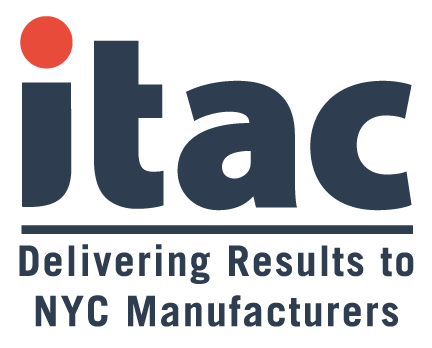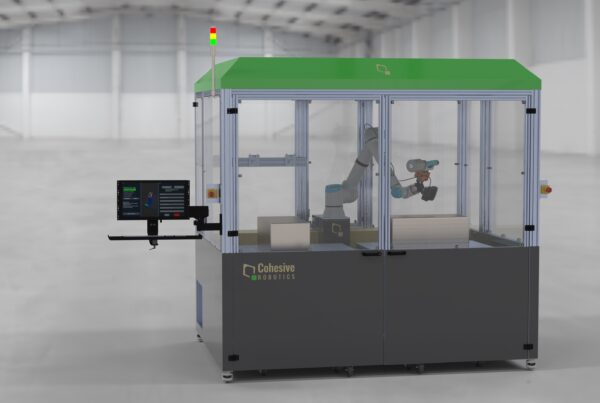The Manufacturing Skills Gap: What Is It? And how do we solve it?
The manufacturing industry is a juggernaut when it comes to moving the economy forward. According to the National Association of Manufacturers (NAMI), manufacturers in the United States accounted for 11.39% of the economy’s total output in 2018. In addition, plants across the country created over $2,334.60 billion in product output for a wide range of industries and consumers. Yet, jobs are going unfulfilled.
Job positions remain empty because there aren’t enough skilled workers. Referred to as the manufacturing skills gap, this issue revolves around the labor market being unable to find workers who have the manual, operational, and highly technical skills, knowledge, or expertise to take the open positions.
The manufacturing skills gap is not simply a buzzword within the industry. Instead, it’s the reality that many manufacturers are facing right now. There are more open job positions than there are workers ready to fill them.
A 2021 study conducted by Deloitte and the Manufacturing Institute (MI) predicts that 2.1 million manufacturing positions will go unfulfilled by 2030. These empty positions could cost the U.S. a loss of about $1 trillion in GDP.
The pandemic also contributed to the loss of manufacturing workers. Roughly 1.4 million jobs vanished at the start of the pandemic, and employers only filled 63% of those jobs with employees returning to work during 2020. Yet, with 570,000 jobs not added back into the industry, the absence of workers may set the manufacturing field back by decades.
Cause of the Manufacturer’s Skills Gap
It would be easy to claim that the cause of the skills gap is the adoption of newer technologies. Yet with more automated processes and robotics used on the plant floor, these technologies are actually creating more jobs within operations. Companies need workers who understand robotics, the Internet of Things (IoT), artificial intelligence, and analytics. As a result, manufacturers are expanding and diversifying their workforce with open positions for:
- Robot teaming coordinators
- Smart factory managers
- Digital twin engineers
- Smart Q.A. managers
Still, pinpointing the cause of the manufacturer’s skills gap is not an easy task because there’s no singular issue contributing to the problem. However, factors that can impact the skills gap include:
False Job Perception
People have varying perceptions of what manufacturing entails since the industry is so vast while having differing processes based on operations. These perceptions impact how young talent views the industry.
They may look at manufacturing jobs from the viewpoint of their aging parents and grandparents, who might have worked long hours under laborious conditions. They might believe that working in manufacturing means subjecting themselves to a large, dark, and dusty shop floor with workers standing in line assembling products along a conveyor belt that is constantly moving.
Most young employees simply don’t want to deal with the same harsh work conditions as they’re looking to break out of the generational job rut. These outdated perceptions lead to disinterest in younger workers.
Lack of Technology Skills Sets
Even if you can change the perception of manufacturing into the ideal of a bright and clean plant with shiny robot arms welding and assembling parts, people still aren’t rushing to fill positions. Some workers may have one skill that may or may not be highly specialized.
In today’s job market, many manufacturers are looking for workers who have several skill sets. They want workers who know about IoT, robotics, and automation. While machinist knowledge is desirable if the machinist is also versed in engineering and advanced robotics, they have greater opportunities to land available jobs. Manufacturing employers covet workers with overlapping skills.
However, this desired trait isolates some adult employees. Middle-aged workers may shy away from manufacturing jobs as they believe they don’t have the time or money to learn additional skills independently. They see manufacturing jobs as a static position that doesn’t allow upward mobility due to their lack of additional skills, knowledge, or expertise. They also don’t want to take on the debt to learn these additional skills as they will have to carry that financial burden into retirement.
Retiring Baby Boomers
Workers who may have spent their entire employment at a manufacturer are now leaving the workforce. These are highly skilled employees who have 10+ years of experience under their belt. Finding replacements for these employees is extremely difficult. Not only did these workers bring in a unique set of skills when first taking on the job, they learned their enhanced expertise with hands-on experience.
When it comes to operations using customized equipment and machines, it can be nearly impossible to find workers who understand and have in-depth knowledge of the same equipment that can get started immediately on the production line. As a result, many manufacturing leaders may find themselves in the position of trying to lure talented veteran workers from other competing facilities.
They might also offer higher salaries and more enticing benefits packages. Yet smaller manufacturers on tight budgets may not be able to afford to take this route to locate experienced employees. Also, they may not want to take the chance that the baby boomer might soon retire if they do find someone.
Blue Collar Work Avoidance
In today’s society, people hold a stigma toward people who are considered blue-collar workers. Many people view blue-collar workers as less educated. Many young workers also avoid blue-collar work because they believe employees don’t fully value this work segment. They believe CEOs and managers place unfair demands on blue-collar workers while paying them the lowest wages possible.
Due to this mentality, more people flock to white-collar jobs for more job stability, upward career mobility, and higher wages. Unfortunately, this problem has led to a shortage of blue-collar workers taking manufacturing positions, such as welders, machinists, and freight carriers.
Industry 4.0: How It Will Shape the Future of Manufacturing
You may have heard that the world has entered its newest industrial revolution. Called the Fourth Industrial Revolution, or simply Industry 4.0, it’s the rapid pace of digitalization adoption in the manufacturing industry. It encompasses the digital technology advancements previously discussed above, including robotics, IoT, artificial intelligence, and other tech advancements, including cloud computing, wireless communication, and many others.
Industry 4.0 could advance the manufacturing segment in vast and ever-changing ways as newer innovations enter the field. Currently, Industry 4.0 may allow advanced communication capabilities within manufacturing equipment through wireless capabilities, meaning that workers may access equipment through any mobile device in remote locations.
Another way industry 4.0 could shape manufacturing is the decentralization of networks and data. Instead, the interconnections of equipment using wireless technologies and the cloud would allow more information transparency in operations. Workers could access this information effortlessly, allowing them to make better decisions to increase productivity. Employees turn into problem solvers as they rely on critical thinking and creativity to overcome problems.
The concept of Industry 4.0 could allow for more straightforward and accessible methods for manufacturers to become more efficient and sustainable in their operations. In turn, these advancements could lead to lower waste and increased revenue growth.
Having workers who understand these changes and can obtain the skills required for digital adoption in processes will benefit manufacturers in the long term.
Future Jobs in Manufacturing
With Industry 4.0 arriving, many new jobs will appear, only increasing the number of unfilled positions in the manufacturing sectors. These jobs will require workers to understand and fully embrace the digital tools soon appearing in operations. Some job examples that we’re likely to see in manufacturing in the future include:
- Predictive Supply Network Analyst: These analysts rely on the use of digital tools to move materials through a digital supply network to provide just-in-time (JIT) deliveries.
- Manufacturing Cybersecurity Strategist: The strategist helps prevent network security threats and hackers from creating breaches and stealing data.
- Smart Factory Manager: This manager uses machine learning algorithms and artificial intelligence to manage inventory levels and build schedules.
- Digital Twin Architect: An architect that makes virtual representations of processes, products, and systems
- Smart Quality Assurance (Q.A.) Manager: A manager who uses digital tools to manage product quality
- Collaborative Robotics Technician: This technician sets up, monitors, and maintains collaborative robotics systems.
Skills Lacking in Manufacturing
Keep in mind that the skills required for a manufacturing position will depend on the specific work provided. Also, these skills may change if the requirements for the position changes. Generally, manufacturers may seek out people with the following skill sets:
- Manufacturing Experience/Know-How: Previous work experience in the field or in a related area where skills are transferable
- Physical Know-How: Physical experience with manufacturing tools, such as welding and machining
- Digital Fluency: Having the aptitude for interpreting and using digital information
- Programming: Proficiency with computer programming languages and debugging tasks
- Problem Solving/Troubleshooting: The ability to process problems and find solutions
- Big Data Analytics: Understanding how to use advanced analytical techniques with large data sets
- Soft Skills: Consists of core or common skills, such as work ethic, communication, adaptability, teamwork, and leadership
Fixing the Skills Gap
To fix the wage gap, manufacturers will need to focus on the worker challenges commonly faced in the industry as mentioned above, including young workers having a false perception of manufacturing, blue-collar job avoidance, retiring older workforce, and lack of technology skill sets. Here are some ways that manufacturing leaders can help bring more workers to the industry:
Take Advantage of MFG Day
Manufacturing (MFG) Day occurs annually on the first day of October. It provides an opportunity for manufacturers to throw open their doors and invite the public to see what’s involved with their manufacturing processes. The public can observe how workers interact with machinery and other manufacturing methods and advancements, as the day inspires curiosity and allows people to ask questions.
Using MFG Day as a learning day may help change the skewed perception that many young workers have about the manufacturing industry. It also shows them the possible jobs available that they may want to pursue as a lifelong career. According to the U.S. Department of Commerce, there are typically 2,600 open houses held every year with roughly 400,000 parents, students, and community members in attendance.
Educate Younger Workers and Students
Once piquing the interest of young workers and students, you need to keep that interest going and motivate them into taking that next important step toward a career in manufacturing. Disseminating manufacturing job information and skill requirements to younger workers and students allows them to understand what skill sets employers are looking for so they can tailor their education to align with the open job positions.
Manufacturers may also hold workshops and seminars about how to operate certain tools and machines. Having students gain hands-on experience allows them to develop their physical know-how regarding tool usage further.
Upskill Current Workers
Never overlook the current workforce. Existing employees may be eager to enter new job positions in the company if given the opportunity for enhanced learning. Developing the required skills in existing employees may allow them to become specialized in specific processes and special equipment. It also cuts down on hiring costs.
Steps Employers and Education Institutions Can Take to Tackle the Skill Gap
Current manufacturers and educational institutions may not be in alignment regarding the types of skills workers require. According to the Brookings Institution, employers may partner with local higher education institutions to offer intern programs. These intern programs can overcome the existing skills gap obstacles and offer degree and credentialing pathways to help students succeed.
Another option for both employers and educators is to have postsecondary programs that offer a more transparent look into what competencies students hope to gain from learning. Understanding the skills they need to obtain allows students to make better career decisions when seeking manufacturing jobs.
Young workers may also get involved with many online manufacturing programs that can help support their careers in this exciting field. Some programs include the NIIMBL eXperience, the AFFOA’s MITxFIT Program, NextFlex’s Flex Factor, and RAPID’s eLearning Programs.
Students, workers, or employers interested in these programs can visit Manufacturing USA, a network of member institutes sponsored by the U.S. Department of Energy, Commerce, or Defense.
This insight is from Manufacturing.net. Click here to read the full article.
If you are looking to upskill your workforce, please reach out to ITAC today. We are prepared to help your team learn and adopt advanced manufacturing technology.






